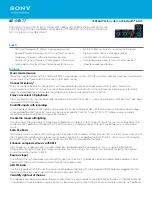
12
1.4.3
Turnstile principle of operation
1.4.3.1
Turnstile operation modes
:
1)
single access in the direction “A” or “B”
;
2)
locking
;
3)
free access in the direction “A” or “B”
.
4)
"PANIC" mode
1.4.3.2
In the initial state, when the turnstile is deenergized, barrier rods are locked
from rotation and access is barred.
1.4.3.3
Green arrow in the intended direction is lit on LED display and barrier rods are unlocked
when access permission command in the direction “A” or “B” comes to controller. Servomotor is
actuated and turns barrier rods in the appropriate direction when a barrier rod is manually gently
pushed in the intended direction. After the turnstile pedestrian access barrier rods continue to
smoothly turn forward (turn additionally) gradually slowing down and when the relevant angle is
reached they are locked by means of two stop catches of the actuating mechanism.
The mechanism powerful controllable ratchet system does not allow to return a barrier rod in the
opposite direction (against the movement in which the access was started) after rotation to 30 º,
60 º, 90 º, 120º.
In case of need for emergency human evacuation from building rooms, the turnstile goes to
"PANIC" mode and provides free access in both directions by means of antipanic device.
The antipanic device (
See Fig. 6
) is automatically activated when the turnstile is deenergized
(Failsafe), and in this case a barrier rod can't be returned to its initial position during the active
panic mode.
Barrier rod is dropped and access way is cleared when the "PANIC" button is pushed on control
panel and hold for more than 7 seconds or when signal is sent to the relevant input (
in1
) of the
turnstile controller.
А)
"Standby" mode
B)
"Panic" mode
Fig
.6
–
Turnstile operation in "PANIC" mode













































